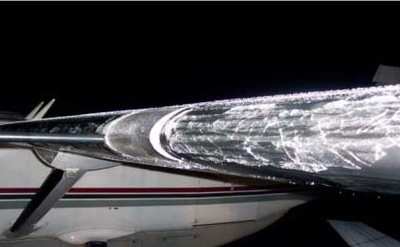Aero-Tips!
A good pilot is always learning -- how many times have you heard
this old standard throughout your flying career? There is no truer
statement in all of flying (well, with the possible exception of
"there are no old, bold pilots.")

Aero-News has called upon the expertise of Thomas P. Turner,
master CFI and all-around-good-guy, to bring our readers -- and us
-- daily tips to improve our skills as aviators. Some of them, you
may have heard before... but for each of us, there will also be
something we might never have considered before, or something that
didn't "stick" the way it should have the first time we memorized
it for the practical test.
Look for our daily Aero-Tips segments, coming each day to you
through the Aero-News Network.
Aero-Tips 12.28.06
I've recently reviewed Dennis Newton's Severe Weather
Flying for a print publication. This third
edition of a classic weather-avoidance text, in continuous print
since 1983, aims to teach strategies to avoid flying in "severe"
weather.

One area Newton discusses at length is airframe ice. ANN readers
know that the whole concept of "known ice" is being reviewed by the
Federal Aviation Administration, and a reported new approach to the
legalities of flight in such conditions is being contested by AOPA.
For purposes of this writing I'll focus not on the legalities of
icy flight, but a practical outcome of Newton's research in
creating the third edition of his book.
Weight, or aerodynamics?
Is ice mainly a hazard because of the weight it adds to the
airframe, or the affect ice has on the aircraft's design?
A lot of data has been taken in icing [wind] tunnels and in
flight testing," reports Newton. "It is possible to give some
ballpark numbers to point out the relative magnitude" of
ice-related degradation. For instance, "the weight of ice does not,
in itself, present a serious problem." However, "even small
buildups of ice on airfoil leading edges can decrease maximum lift
coefficient by about 30 percent. Most of the damage to lift is done
by the first accumulation... even a small buildup will
significantly reduce the angle of attack at which an airfoil will
stall."
The old saw that some airplanes can "handle" ice better than
others because of their load-carrying capability simply isn't true.
"Handling" ice is a function of how ice builds on the wings,
propeller and tail... and that's not predictable until ice actually
begins to form.
Wings, or propeller?
Some think that ice on the wings isn't as bad as ice on the
propeller(s), to generate ice-overcoming thrust. Settling an
argument about whether it's better to keep the propeller(s) clean
(for thrust) or the wings, Newton writes "the propeller advocates
lose the contest handily, according to the data." In other words,
stalling or hard landings are more an issue with ice accumulation
than not having enough power to stay aloft.
Aero-tip of the day: Surviving an icing
encounter is all about preserving aerodynamics by keeping airfoils
clear of ice.
 ANN's Daily Aero-Term (04.26.24): DETRESFA (Distress Phrase)
ANN's Daily Aero-Term (04.26.24): DETRESFA (Distress Phrase) Aero-News: Quote of the Day (04.26.24)
Aero-News: Quote of the Day (04.26.24) ANN's Daily Aero-Term (04.27.24): Direct
ANN's Daily Aero-Term (04.27.24): Direct ANN's Daily Aero-Linx (04.27.24)
ANN's Daily Aero-Linx (04.27.24) Aero-News: Quote of the Day (04.27.24)
Aero-News: Quote of the Day (04.27.24)




